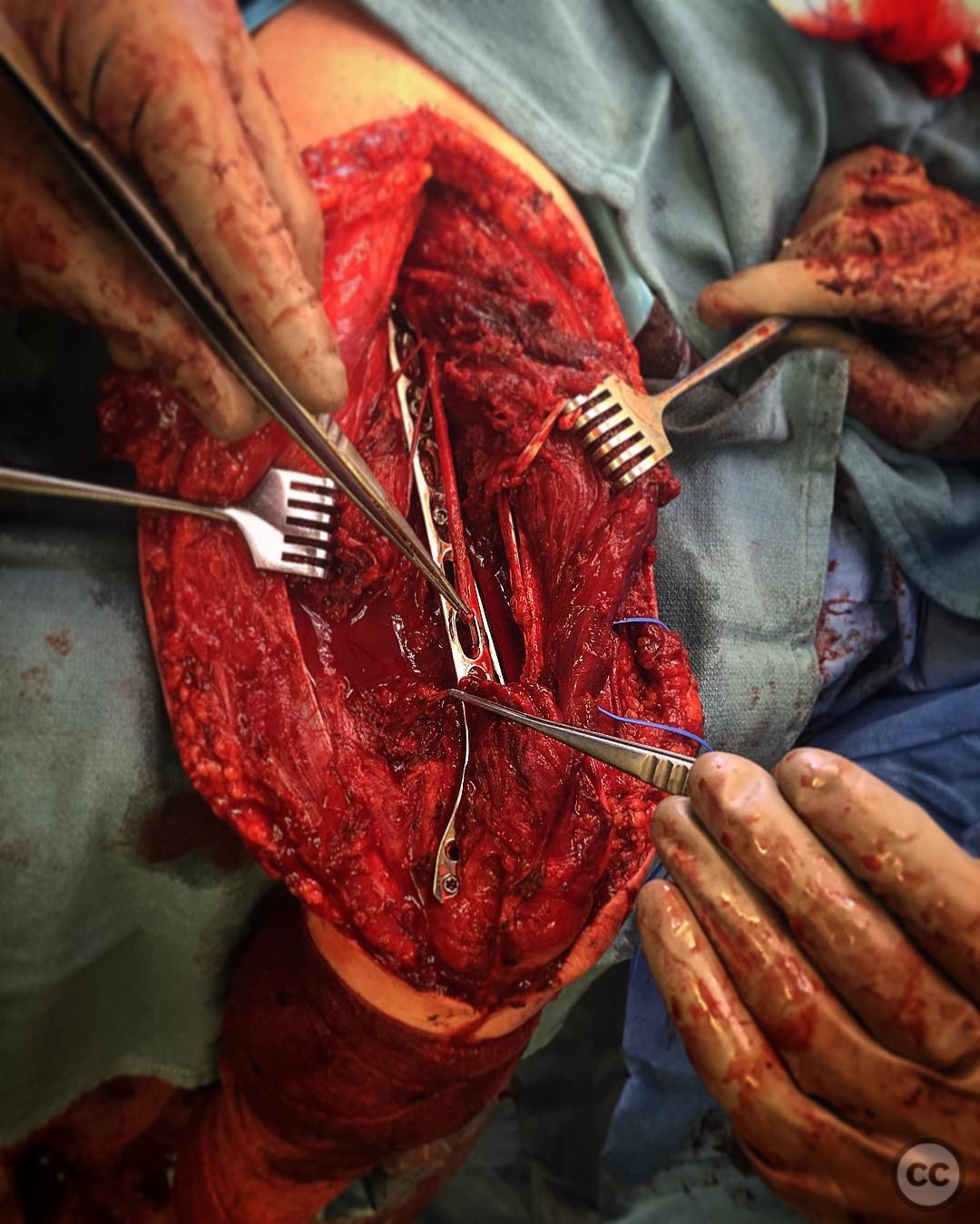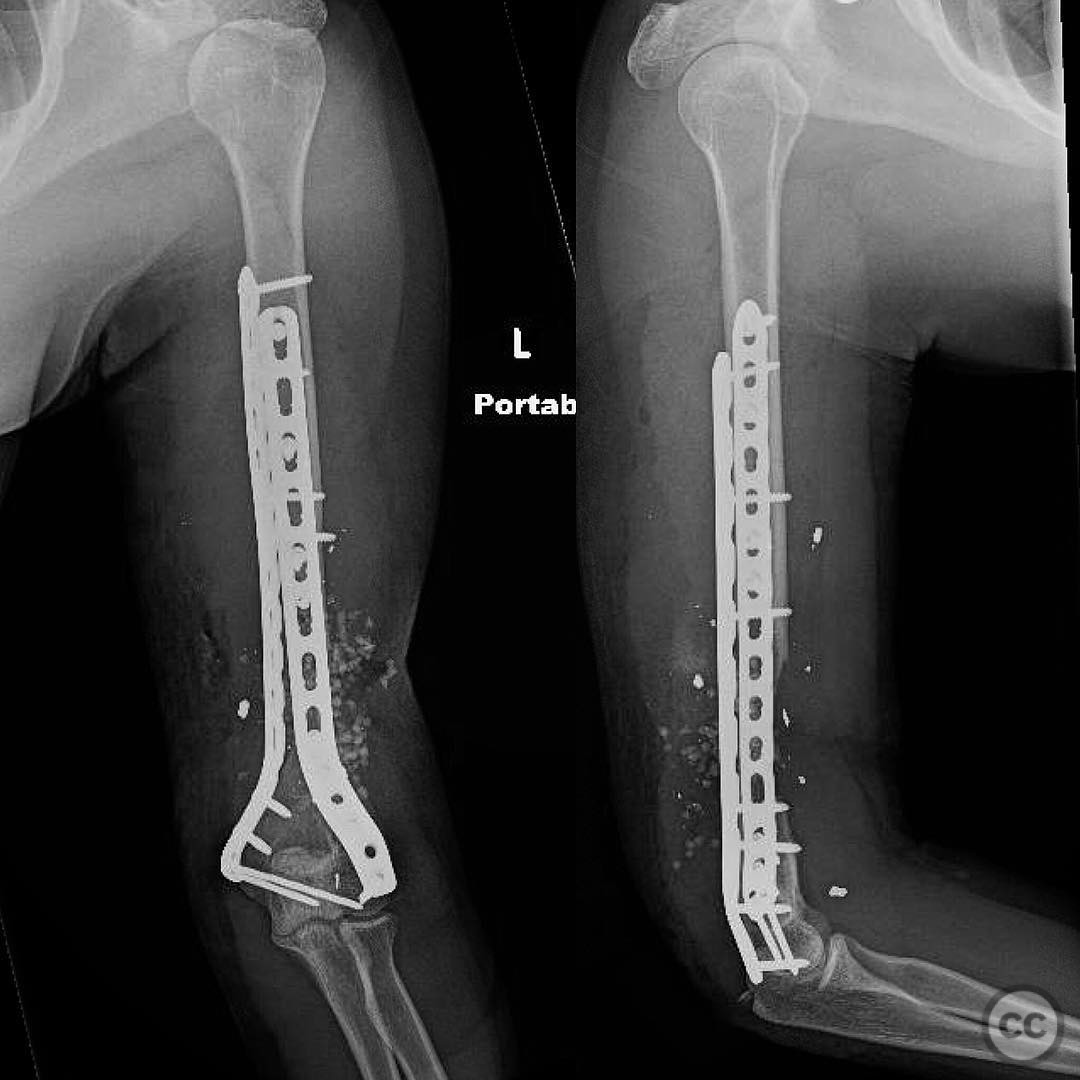Complex Humeral Shaft Fracture with Radial Nerve Transection due to High-Velocity Gunshot Wound.
Score and Comment on this Case
Clinical Details
Clinical and radiological findings: A patient sustained a high-velocity gunshot wound to the arm from a .357 magnum, resulting in a 5 cm bone defect in the humeral shaft and transection of the radial nerve. The zone of injury was extensive, but the blood supply and other major nerves remained intact. The extensor mechanism was preserved. Radiological assessment confirmed the extent of the bony defect and soft tissue damage. The AO/OTA classification for this fracture is 12-C3, indicating a complex fracture pattern with a segmental defect.
Preoperative Plan
Planning remarks: The preoperative plan involved dual column fixation using a narrow 4.5 mm posterolateral plate and a 3.5 mm long medial plate for 90/90 fixation to stabilize the humerus. The approach was designed to accommodate future staged bone grafting and nerve reconstruction.
Surgical Discussion
Patient positioning: The patient was positioned supine with the arm placed on a radiolucent arm table to allow for optimal access to the humeral shaft and facilitate intraoperative imaging.
Anatomical surgical approach: A posterior approach to the humerus was utilized, involving an incision along the posterior aspect of the arm. The triceps muscle was split longitudinally to expose the humeral shaft. Care was taken to identify and protect the brachial artery and intact neurovascular structures.
Operative remarks:Intraoperatively, it was noted that the radial nerve was missing over 2 cm of its length, precluding immediate repair. Calcium phosphate beads impregnated with vancomycin and tobramycin were placed in the defect to manage infection risk and provide temporary structural support. These beads are expected to resorb in approximately six weeks, at which point autograft RIA will be performed for bone grafting. Elective nerve reconstruction is planned at the time of bone grafting due to the concussive effect on the nerve.
Postoperative protocol: Postoperatively, the patient will be immobilized in a functional brace with elbow flexion to reduce tension on the radial nerve region. Passive range of motion exercises will commence at two weeks post-surgery, with active range of motion exercises introduced at six weeks post-surgery following bone grafting.
Follow up: Not specified.
Orthopaedic implants used: Narrow 4.5 mm Synthes posterolateral plate, 3.5 mm Synthes long medial plate, calcium phosphate beads impregnated with vancomycin and tobramycin.
Search for Related Literature

orthopaedic_trauma
- United States , Seattle
- Area of Specialty - General Trauma
- Position - Specialist Consultant

Industry Sponsership
contact us for advertising opportunities



Article viewed 83 times
05 Aug 2025
Add to Bookmarks
Full Citation
Cite this article:
Surname, Initial. (2025). Complex Humeral Shaft Fracture with Radial Nerve Transection due to High-Velocity Gunshot Wound.. Journal of Orthopaedic Surgery and Traumatology. Case Report 36821211 Published Online Aug 05 2025.